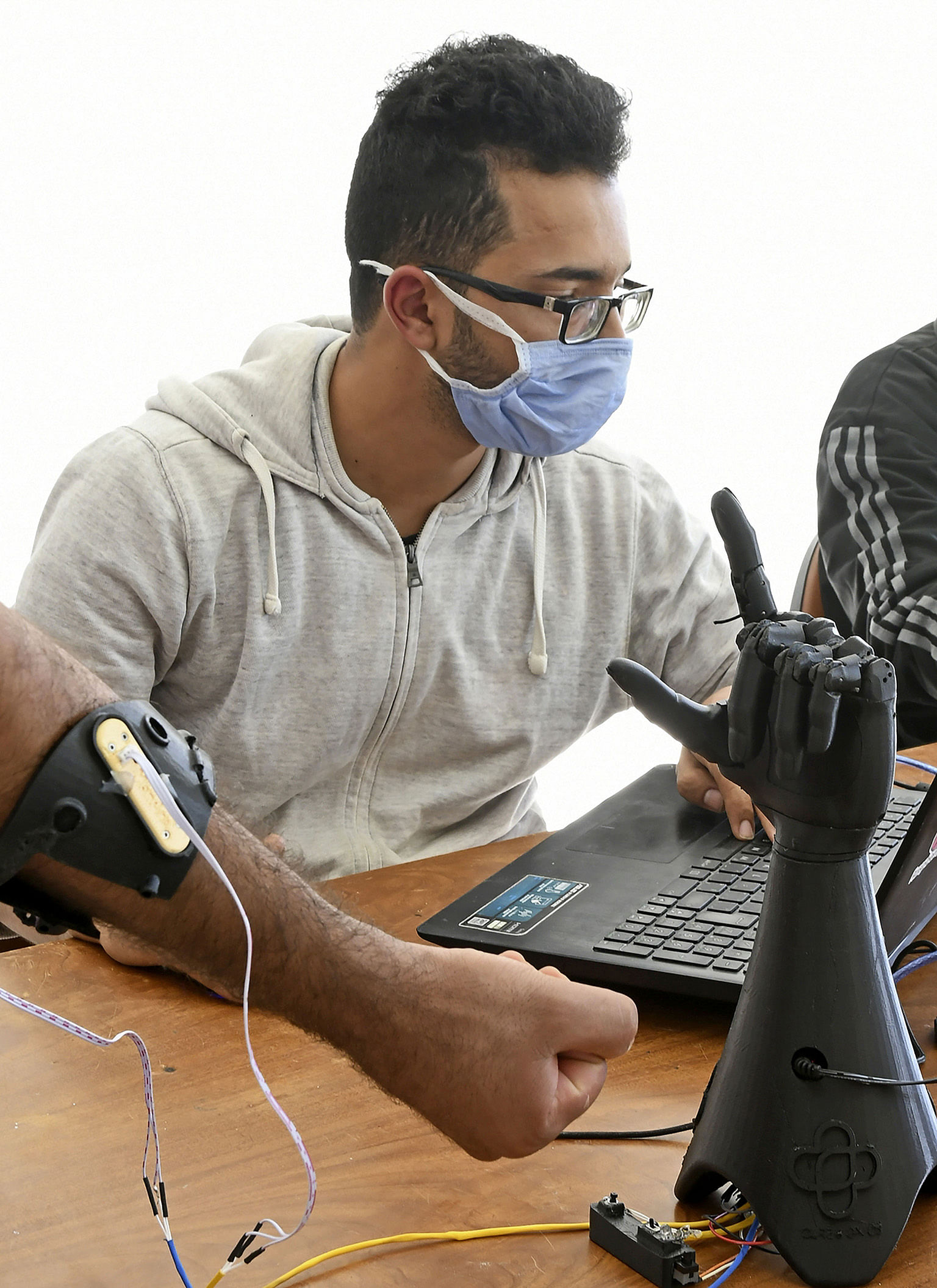SOUSSE (Tunisia) • A Tunisian start-up is developing a 3D-printed bionic hand, hoping the affordable and solar-powered prosthetic will help amputees and other people with disabilities across Africa.
Unlike traditional prostheses, the artificial hand can be customised for children and youth, who otherwise require an expensive series of resized models as they grow up.
The company, Cure Bionics, also has plans to develop a video game-like virtual reality system that helps youngsters learn how to use the artificial hand through physical therapy.
Mr Mohamed Dhaouafi, founder and chief executive of Cure Bionics, designed his first prototype while still an engineering student in his home city Sousse.
"One team member had a cousin who was born without a hand and whose parents couldn't afford a prosthesis, especially as she was still growing up. So we decided to design a hand."
Mr Dhaouafi launched his start-up in 2017 from his parents' home.
He pointed to hurdles in Tunisia, where it can be hard or impossible to order parts via large online sales sites. But by pooling money raised through sponsored competitions and seed investment from a United States company, he was able to recruit four young engineers.
They are now fine-tuning designs, writing code and testing the artificial hand.
The device works with sensors attached to the arm that detect muscle movements, and artificial intelligence-assisted software that interprets them to transmit instructions to the digits.
The hand itself has a wrist that can turn sideways, a mechanical thumb and fingers that bend at the joints in response to the impulses.
To teach youngsters how to use them, Cure Bionics has been working on a virtual-reality headset that "gamifies" the physical therapy process. "Currently, for rehabilitation, children are asked to pretend to open a jar, for example, with the hand they no longer have," said Mr Dhaouafi, 28.

"It takes time to succeed in activating the muscles this way. It's not intuitive, and it's very boring."
In Cure Bionics' version, the children climb up buildings like Spider-Man, with a game score to motivate them, and a doctor can follow up online from a distance.
Cure Bionics hopes to market its first bionic hands within a few months, first in Tunisia and then elsewhere in Africa, where over three-quarters of people in need have no access to them, according to the World Health Organisation.
The envisaged price of around US$2,000 (S$2,720) to US$3,000 is substantial, but a fraction of the cost of bionic prostheses currently imported from Europe.
The bionic hand is made of Lego-like parts that can be replaced if damaged or to match a child's physical growth.
Mr Jerry Evans, who heads Nia Technologies, a Canadian non-commercial organisation that helps African hospitals manufacture 3D-printed lower limbs, said: "3D printing is still in its early stages... but it is a major game changer in the field of prosthetics and orthotics."
AGENCE FRANCE-PRESSE
